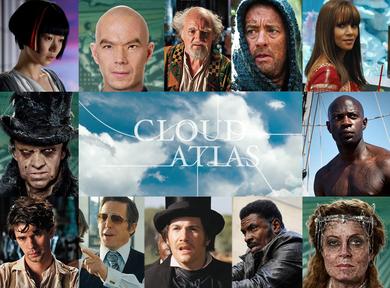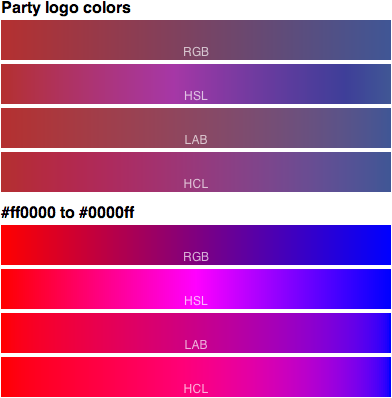|
The router is the most important computer in your home but most consumer routers are junk hardware with terrible software. For years my Linksys WRT54GL + Tomato firmware has been doing me well but Tomato hasn’t had an update in two years and the WRT54GL doesn’t do 802.11n. The modern equivalent is an ASUS RT-N16 running Toastman’s Tomato build. Good stuff. The RT-N16 does 802.11n well and is overpowered hardware. The Toastman builds have all the goodness of stock Tomato along with nice features like USB drives and file serving. And my favorite feature, per-device network monitoring; perfect for figuring out what the heck is using all your bandwidth. The stock ASUS firmware is garbage. Replacing it is a bit tricky; your choices are using their weird Windows software, installing a signed DD-WRT build first, or doing it by hand with tftp. I did the tftp trick and it worked fine. Unfortunately Toastman distributes his builds on a server that requires a login, but it does actually work. I used build tomato-K26USB 1.28.7500 4MIPSR2Toastman-RT-Ext. Some alternatives.. The ASUS RT-N66U is fancier hardware that does 5GHz 802.11n for more wireless speed. But it’s about twice the price. The Shibby Tomato builds are also under active development and popular. And some people like OpenWRT or DD-WRT firmware; I prefer Tomato’s simplicity. This recommendation mostly comes from Jeff
Atwood
The elections are over and the visualizations of the vote have come out. The red/blue maps, the warpy cartogram maps, the pointillist map, and the eye searing purple map. All well intentioned, many with awful colors. Above are eight options for red / blue color scales. The top 4 interpolate between the sedate party logo colors (from NYTimes), the bottom are fully saturated red to blue. Each set of 4 bars represents four different interpolation functions: the simplistic RGB and HSV scales and the perceptual LAB and HCL scales. Which is best? It depends on your goal. But RGB and HSL interpolation are almost always wrong, they’re very misleading. And for everyone’s eyeball safety, please don’t use fully saturated colors. My new house in Grass Valley really makes me miss wired broadband. I’m only 3 miles from the middle of town but there’s no wired broadband options, no cable or DSL. So everyone uses wireless Internet. Fixed Wireless is the new hotness. Remember all those nerds throwing WiFi over a mile with Pringles can waveguides and Yagi directional antennas? Fixed Wireless is that idea made commercial with hardware like Motorola Canopy. It’s a peer to peer network; my house has a directional antenna pointed north with an always on 900MHz link to some other house. That house links to another house, which in turn links at 2.4GHz to a tower with wired bandwidth. The good news is the latency is very low, about 30ms before I reach the edge of my ISP. Compared to satellite’s 250ms+ that’s terrific. Bandwidth is not great; I’m paying $70/mo for 768kbps download. That’s about twice the price and one tenth the speed of my sonic.net DSL, but given the limitations of wireless it seems reasonable. Here’s a roundup of ISP prices in western Nevada County; fixed wireless comes in the middle between DSL/cable and cellular service. The big bummer is the peer to peer network with houses sharing bandwidth. It’s like a return to party lines! My ISP heavily manages things. My 768kbps is actually more like 2000kbps but only in a burst for the first 15 seconds; just perfect for loading web pages and other quick interactive stuff. I also have a monthly download cap of 15GB. That seems terribly restrictive and I don’t like it, but they tell me they need it to manage shared bandwidth. It’s too bad, a single HD movie or game download is about 5GB. So I’m closely monitoring usage and doing things like bringing my Mac back to SF just to upgrade Xcode. Internet access is such a vital resource for our culture and economy, bringing good broadband to rural areas is important. There is a fiber backbone project being built now that will bring a lot more bandwidth to Grass Valley mid-2013, but the last mile problem is real. And getting worse; AT&T has actually removed service in Nevada County and Comcast isn’t even trying. It’s not profitable for them to run cable to customers, so they just don’t bother. Wireless seems to be the only option for the future, but there are fundamental limitations that mean it will never be as good as wired broadband. The new Wachowski/Tykwer film Cloud Atlas is a hell of a good movie. If you’re at all curious about it, go see it in a real theater. It’s a terrific example of what film can be. Sprawling, uncompromising, beautiful.  It’s also one of those rare films that’s better than the book. I read the novel last month in preparation and while I enjoyed it, I found it a bit flat and hard to get through. The film picks up on all the interesting themes of the story and tells it more effectively. My only fear is it might be a bit hard to follow the movie; a plot synopsis of the story may help you enjoy the movie more and won’t spoil too much. I particularly like how they re-imagined the book as a movie, changing the narrative structure. The book is a series of 6 nested stories told in halves, ABCDEFEDCBA. The film chops that up and interleaves the stories much more rapidly. That lets them systematically highlight the common themes and narratives between each story that makes the whole work so intriguing. They also play off the stylistic inconsistency of each story, the mix of action, sci-fi, and farce coming fast and furious gives the narrative some much needed variety. Add on top of that great filmmaking, casting (Jim Broadbent!), makeup, production design, and it’s a rare example of a complete movie coming together. I’m also impressed at how the Wachowskis have stayed true to their vision of the filmmaker’s art. After the relative failures of the Matrix sequels and the underappreciated Speed Racer, you could imagine them compromising, retrenching. But there’s nothing tentative about Cloud Atlas, it’s an aggressive film. The collaboration with Tykwer also seems to have worked to everyone’s benefit. |
||

